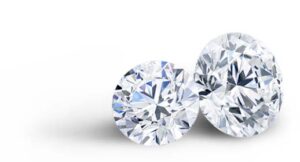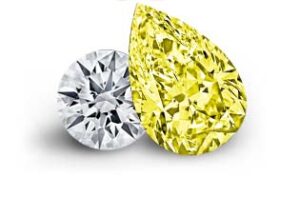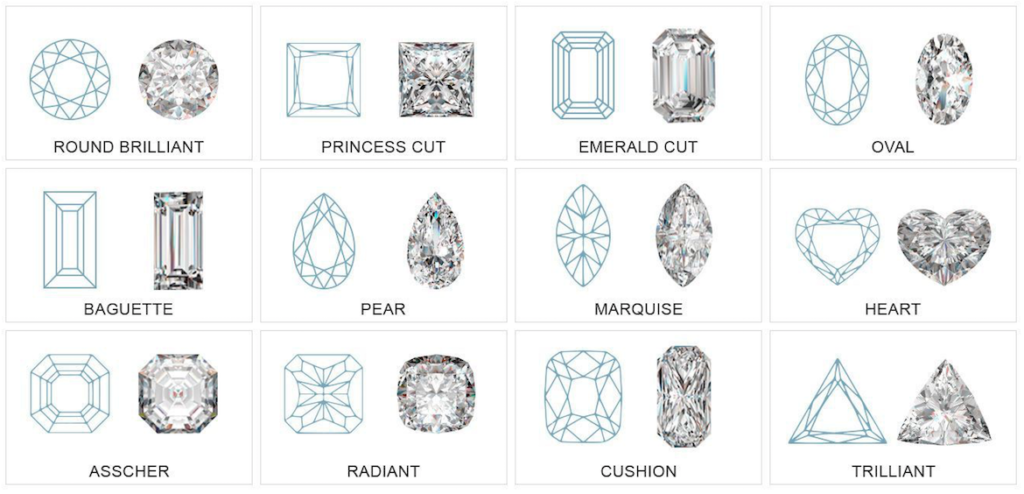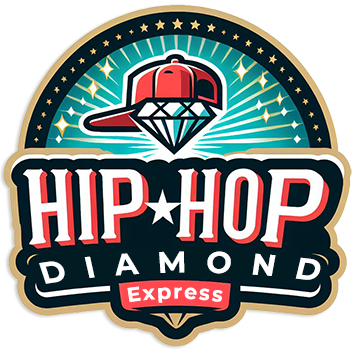Understanding the 4Cs of Diamonds
Because diamonds are so valuable, it’s essential to have a universal grading system for comparing their quality. In the 1940s and ’50s, GIA developed the 4Cs and the GIA International Diamond Grading System™ to objectively compare and evaluate diamonds. Click on each section below to learn more about diamonds.
- CARAT
- COLOR
- CLARITY
- CUT
- SHAPE
- LAB vs. NATURAL
 When it comes to diamonds and gems, we measure ’em in metric carats. One carat? That’s like 0.2 grams, basically the weight of a paperclip. But hold up, don’t get it twisted with karat, like in “18K gold.” That’s a whole different vibe — it’s about how pure the gold is.
When it comes to diamonds and gems, we measure ’em in metric carats. One carat? That’s like 0.2 grams, basically the weight of a paperclip. But hold up, don’t get it twisted with karat, like in “18K gold.” That’s a whole different vibe — it’s about how pure the gold is.
Now, think of a carat like a dollar. Just like a buck splits into 100 pennies, a carat splits into 100 points. So if someone’s flexin’ a 50-point diamond, that’s half a carat — 0.50 to be exact. But here’s the kicker: two diamonds that weigh the same can still have wildly different prices, all depending on the other C’s — clarity, color, and cut. Most of the bling you see in fine jewelry is usually a carat or less.
Even the tiniest fraction of a carat can bump up the price tag, so precision is everything. In the diamond game, they measure down to the hundred-thousandths of a carat and round it to the nearest hundredth. When a diamond’s over a carat, they talk decimals. Like a 1.08 ct. gem? That’s “one point oh eight carats” or just “one oh eight.”
Where Did the Carat Game Come From?
The carat system got roots way back. The name comes from carob seeds — yeah, like those little seeds used to make that healthy chocolate your moms talks about. Back in the day, traders used carob seeds as weights ’cause they were hella consistent. Fast forward to 1913, the U.S. adopted the metric carat (0.2 grams) and the rest of the world followed suit. Now, no matter where you’re at (LA, NYC, Paris or Tokyo) a carat’s the same everywhere. That’s universal shine. Today, a carat weighs exactly the same in every corner of the world.
 Diamond color – it’s all about what you can’t see. The closer a diamond gets to being icy-clear, the more it’s worth. Less color equals more value — simple as that. But, don’t get it twisted — those fancy-colors, like pinks, yellows and blues, play by a whole different rulebook.
Diamond color – it’s all about what you can’t see. The closer a diamond gets to being icy-clear, the more it’s worth. Less color equals more value — simple as that. But, don’t get it twisted — those fancy-colors, like pinks, yellows and blues, play by a whole different rulebook.
Most of the diamonds you see in stores are somewhere between clear and near-clear, maybe with a little hint of yellow or brown. The real pros use the GIA’s (Gemological Institute of America) color-grading scale – it’s the standard in the game. They start at D, which means pure, clean, colorless (white) and goes all the way to Z. Each grade has its own specific vibe, and diamonds are graded under legit conditions, comparing them to stones with known colors.
Here’s the thing — most of the differences in color are so subtle, regular folks won’t even notice. But trust, those tiny differences can make a big impact on quality and value.
Why GIA Starts at D
Back in the day, diamond grading was all over the place. People were using letters like A, B, and C (and sometimes triple A’s for the top-tier stones), numbers, and even terms like “gem blue” or “blue white.” It was messy, inconsistent, and nobody was on the same page.
When GIA stepped up, they wanted to rewrite the rules — start fresh with no ties to the old systems. So, they picked D to kick things off, a letter most people wouldn’t think means “top-shelf.” And now, that D-grade is the ultimate flex in the diamond world.
 Diamonds are born deep in the Earth, cooked under crazy heat and pressure. That kind of grind leaves marks — little “birthmarks” on the inside (inclusions) or outside (blemishes). These marks tell the diamond’s story, but the cleaner the stone, the rarer it is, and you know rare equals expensive.
Diamonds are born deep in the Earth, cooked under crazy heat and pressure. That kind of grind leaves marks — little “birthmarks” on the inside (inclusions) or outside (blemishes). These marks tell the diamond’s story, but the cleaner the stone, the rarer it is, and you know rare equals expensive.
Diamond clarity is all about how free the stone is from those marks. The cleaner it is, the more it’s worth. GIA, the OGs in diamond grading, use their International Diamond Grading System™ to rank clarity. The grades run from Flawless (FL) — the crème de la crème — to Included (I3) — stones where the marks are loud and clear, and visible to the naked eye.
No diamond is perfect, even under a 10× magnifier. But some get real close—those are the Flawless (FL) diamonds, the unicorns of the diamond world. Most jewelers have never even laid eyes on one. The majority of stones you’ll see land somewhere in the middle, like VS (Very Slightly Included) or SI (Slightly Included).
The GIA Clarity Scale – Here’s the Breakdown
- Flawless (FL): No marks at all under 10× magnification. It’s like spotting Bigfoot — rare as hell.
- Internally Flawless (IF): No internal marks, just some tiny surface ones. Still ultra-rare.
- Very, Very Slightly Included (VVS1 and VVS2): Marks so tiny, even the pros gotta squint under the magnifier.
- Very Slightly Included (VS1 and VS2): Marks you can see under the scope, but they’re chill, not a big deal.
- Slightly Included (SI1 and SI2): Marks are noticeable, but they don’t kill the shine.
- Included (I1, I2, I3): Marks are loud and proud — these can mess with how the diamond sparkles.

How’d the Clarity Scale Start?
Back in the day, jewelers were throwing around terms like “loupe clean” or “piqué” and nobody could agree on what they meant. It was a mess. GIA stepped in to clean it up with their clarity scale. Now, no matter where you’re buying, the clarity terms are the same. VVS1 or SI2? That’s the universal language of diamonds, no translation needed.
Cut – that’s the secret sauce behind a diamond’s fire, sparkle, and shine. It’s what makes the ice dance when the light hits it. A round brilliant diamond has 58 tiny facets, each cut with mad precision. Without that precision the diamond wouldn’t pop the way it does. Real talk: the cut is the MVP when it comes to making a diamond shine.
But here’s the thing, cutting a diamond ain’t easy to measure. A diamond’s cut flexes with three key moves:
- Brilliance: How much light it throws back at you.
- Fire: How it splits light into rainbow colors.
- Scintillation: Those flashy sparkles when you move it around.
It all starts with the diamond’s shape. Round Brilliant is the OG — most common in jewelry. But if you’re looking to stand out, there’s the fancy shapes: marquise, pear, oval, emerald. And now hearts, cushions, and triangles? They’re making waves too.

When we talk about Cut as a value factor, it’s all about the diamond’s proportions, symmetry, and polish. Check the anatomy of a round brilliant:
- Crown: The top section that catches the light.
- Girdle: The edge around the middle.
- Pavilion: The bottom part that funnels light back up.
- Table: The big flat spot on top.
- Culet: That tiny flat spot at the bottom (if it’s there.)
The way these parts are balanced (angles, depths & sizes) affect how the diamond plays with light. A diamond’s proportions can make you feel “meh” to mind-blown.
GIA’s Cut Grading System
In 2005, GIA dropped their official cut grading system for round brilliants in the D-to-Z color range. It’s the result of 15 years of research — yeah, they put in work. They rank cuts from Excellent to Poor, so you know if the ice is really bringing its A-game.
What’s the Deal with Pavilion Depth?
Pavilion depth is the distance from the girdle to the culet (see diagram above.) If the pavilion’s too shallow or too deep, light leaks out the sides or bottom. That’s a no-go. A well-cut diamond bounces light straight back through the crown, making it shine like a star.
The shape everybody knows is the round diamond — that’s the classic, the one that’s all about maxing out brilliance and shine. There’s way more to the diamond game than just round cuts. From ovals to hearts, there’s a whole lineup of shapes that bring their own vibe.
Cutting these shapes takes skill, precision, and a steady hand to get them looking flawless. Check out some of the fresh styles we’ve got in the shop — each one designed to bring the sparkle in its own unique way.

 Same DNA, Different Birthplace
Same DNA, Different Birthplace
Lab grown diamonds and natural diamonds share the exact same chemical and physical makeup. Both are pure carbon, crystallized into that signature shine. The difference? Natural diamonds were formed billions of years ago, deep in the Earth, under intense heat and pressure. On the flip, lab grown diamonds are created in a high-tech lab using science that mimics those same conditions.
Can You Tell the Difference?
To the naked eye — and even under a jeweler’s loupe — you can’t tell them apart. The only way to spot the difference is with advanced equipment that detects their origins. So when you rock a lab grown diamond, you’re still shining with 100% ice.
Icy Big Shine, Chill Price Tag
Lab grown diamonds bring the same fire, brilliance, and sparkle as their natural cousins but at a way friendlier price. You can flex a bigger, brighter diamond for less money — who wouldn’t want that?
Can you tell which diamond is natural or lab in the image? Hint: the left one is natural.

